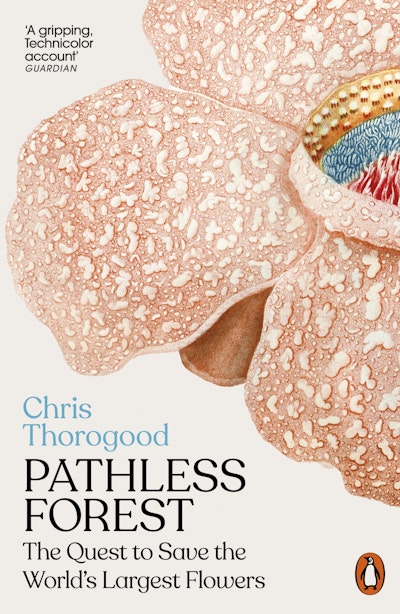- Published: 10 June 2025
- ISBN: 9781802062427
- Imprint: Penguin Press
- Format: Paperback
- Pages: 288
- RRP: $26.99
Pathless Forest
The Quest to Save the World’s Largest Flowers
- Published: 10 June 2025
- ISBN: 9781802062427
- Imprint: Penguin Press
- Format: Paperback
- Pages: 288
- RRP: $26.99
A gripping, Technicolor account
Guardian
Over the years, Rafflesia has bewitched botanists – its very elusiveness adding to its mystique. For Thorogood, who already specialised in parasitic plants, it became the apex of them all. He was Captain Ahab; this was his own great white
Tom Whipple, The Times
Rafflesia [is] one of the strangest and most gruesome plants on the planet … In his flamboyant account, Thorogood has produced a book as highly coloured as the plant itself
Kate Teltscher, Spectator
A love letter to the largest flowers in the world: the monstrous blooms of Rafflesia … a relationship that echoes the monomania of any Werner Herzog antihero … like its subject, his prose is undemure, supersized, unbound by convention
Rachel Aspden, Guardian
A vivid account of this gruelling expedition, combined with his fierce determination to find the pungent plants that have obsessed him for decades
Daily Mail
Thorogood’s dazzling descriptions light up the faraway forests with an impassioned commitment
Sophy Roberts, TLS
Chris Thorogood is a self-described ‘plant junkie’. The plant on which he is hooked is a bizarre one called Rafflesia, a parasitic monster found growing only in the Philippines and Indonesia and notable for its enormous, fleshy blossom. Pathless Forests is a sort of travelogue describing Thorogood’s journey around this part of the world in search of the beasts in bloom … has all the hallmarks of adventure: nearly drowning in a river, scaling cliffs while dangling on lainas, being bitten by giant ants and stung by toxic trees … But it was worth it … and he also makes a serious broader point. Rafflesia … are threatened and on the edge of extinction. For all their strangeness, the very rarity of these gigantic living objects symbolises our continuing carelessness towards nature
Charles Elliott, Literary Review
What is truly inspiring about this book is the positive collaboration that is going on between experts around the world (including indigenous people with knowledge of these plants) to try to put conservation strategies in place and protect these species from extinction
Elanor Wexler, Association of Botanical Artists




